Related Research Articles
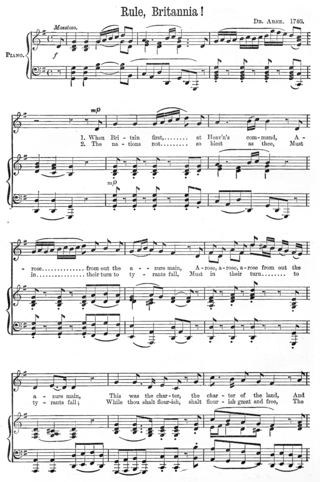
"Rule, Britannia!" is a British patriotic song, originating from the 1740 poem "Rule, Britannia" by James Thomson and set to music by Thomas Arne in the same year. It is most strongly associated with the Royal Navy, but is also used by the British Army.

"Anchors Aweigh" is the fight song of the United States Naval Academy and unofficial march song of the United States Navy. It was composed in 1906 by Charles A. Zimmermann with lyrics by Alfred Hart Miles. When he composed "Anchors Aweigh", Zimmermann was a lieutenant and had been bandmaster of the United States Naval Academy Band since 1887. Miles was midshipman first class at the academy, in the class of 1907, and had asked Zimmermann to assist him in composing a song for that class, to be used as a football march. Another academy midshipman, Royal Lovell, later wrote what would be adopted into the song as its third verse. Another member of the Naval Academy Band, Willy Perlitz Jr., assisting in writing the music for the different instruments used in "Anchors Aweigh".
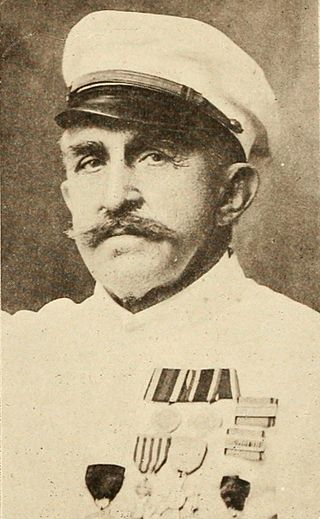
Henry or Henri Berger was a Prussian Kapellmeister, composer and royal bandmaster of the Kingdom of Hawaiʻi from 1872 to 1915.
"The Skye Boat Song" is a late 19th-century Scottish song adaptation of a Gaelic song composed c.1782 by William Ross, entitled Cuachag nan Craobh. In the original song, the composer laments to a cuckoo that his unrequited love, Lady Marion Ross, is rejecting him. The 19th century English lyrics instead evoked the journey of Prince Charles Edward Stuart from Benbecula to the Isle of Skye as he evaded capture by government soldiers after his defeat at the Battle of Culloden in 1746.

Frederick Joseph Ricketts was an English composer of marches for band. Under the pen name Kenneth J. Alford, he composed marches which are considered to be great examples of the art. He was a Bandmaster in the British Army, and Royal Marines Director of Music. Conductor Sir Vivian Dunn called Ricketts "The British March King". Ricketts' frequent use of the saxophone contributed to its permanent inclusion in military bands. His best known work is the "Colonel Bogey March".

A Sea Symphony is an hour-long work for soprano, baritone, chorus and large orchestra written by Ralph Vaughan Williams between 1903 and 1909. The first and longest of his nine symphonies, it was first performed at the Leeds Festival in 1910 with the composer conducting, and its maturity belies the relatively young age – 30 – when he began sketching it. Moreover it is one of the first symphonies in which a chorus is used throughout as an integral part of the texture and it helped set the stage for a new era of symphonic and choral music in Britain during the first half of the 20th century. It was never numbered.
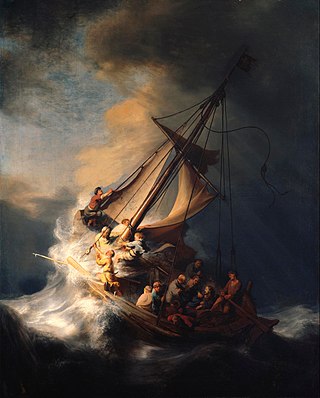
"Eternal Father, Strong to Save" is a British hymn traditionally associated with seafarers, particularly in the maritime armed services. Written in 1860, its author, William Whiting, was inspired by the dangers of the sea described in Psalm 107. It was popularised by the Royal Navy and the United States Navy in the late 19th century, and variations of it were soon adopted by many branches of the armed services in the United Kingdom and the United States. Services who have adapted the hymn include the Royal Marines, Royal Air Force, the British Army, the United States Coast Guard, United States Marine Corps and the United States Space Force, as well as the navies of many Commonwealth realms. Accordingly, it is known by many names, variously referred to as the Hymn of His Majesty's Armed Forces, the Royal Navy Hymn, the United States Navy Hymn, and sometimes by the last line of its first verse, "For Those in Peril on the Sea". The hymn has a long tradition in civilian maritime contexts as well, being regularly invoked by ship's chaplains and sung during services on ocean crossings.

"Nearer, My God, to Thee" is a 19th-century Christian hymn by Sarah Flower Adams, which retells the story of Jacob's dream. Genesis 28:11–12 can be translated as follows: "So he came to a certain place and stayed there all night because the sun had set. And he took one of the stones of that place and put it at his head, and he lay down in that place to sleep. Then he dreamed, and behold, a ladder was set up on the earth, and its top reached to heaven; and there the angels of God were ascending and descending on it..."
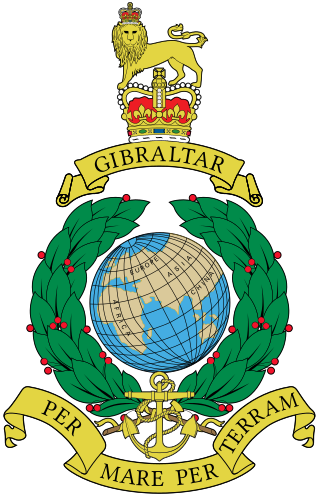
The Royal Marines Band Service is the musical wing of the Royal Navy and an independent element of the Royal Marines. It currently consists of five bands plus a training wing – the Royal Marines School of Music at HMS Nelson – and its headquarters is at HMS Excellent, Whale Island, Portsmouth.

Cape Horn is the southernmost headland of the Tierra del Fuego archipelago of southern Chile, and is located on the small Hornos Island. Although not the most southerly point of South America, Cape Horn marks the northern boundary of the Drake Passage and marks where the Atlantic and Pacific Oceans meet.
"South Australia" is a sea shanty, also known under such titles as "Rolling King" and "Bound for South Australia". As an original worksong it was sung in a variety of trades, including being used by the wool and later the wheat traders who worked the clipper ships between Australian ports and London. In adapted form, it is now a very popular song among folk music performers that is recorded by many artists and is present in many of today's song books.
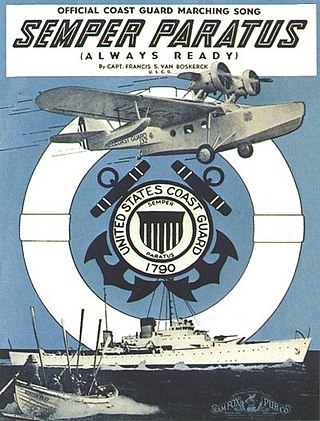
"Semper Paratus" is a 1928 song and the official march of the United States Coast Guard, having been composed in 1927 by U.S. Coast Guard Captain Francis Saltus Van Boskerck.

USS Hanover (APA-116) was a Bayfield-class attack transport in service with the United States Navy from 1945 to 1946. In 1947, she was sold into commercial service. The ship was scrapped in 1972.
"Follow the Colours" is a marching song written by the English composer Edward Elgar in 1907, with words by Capt. William de Courcy Stretton. The song is for male voice solo with an optional male voice chorus, accompanied by piano, orchestra or military band.
"Sailing, Sailing" is a song written in 1880 by Godfrey Marks, a pseudonym of British organist and composer James Frederick Swift (1847–1931). It is also known as "Sailing" or "Sailing, sailing, over the bounding main". The song's chorus is widely known and appears in many children's songbooks. The preceding verses are little known. It appears in Disney's 1961 Goofy short Aquamania. The song also appears on Disney's "Sing Along Songs" Volume 6 - 'Under The Sea' which also features the Sailor's Hornpipe during which Ludwig Von Drake is setting off on a cruise to find the Little Mermaid. More recently it appeared in series 3 of the 2015 TV show Thunderbirds Are Go.

Witch of the Wave was a long-lived extreme clipper in the California trade, with a sailing life of over 34 years. In 1851, she sailed from Calcutta to Boston in 81 days, setting a record. It was renamed the Electra in 1871.
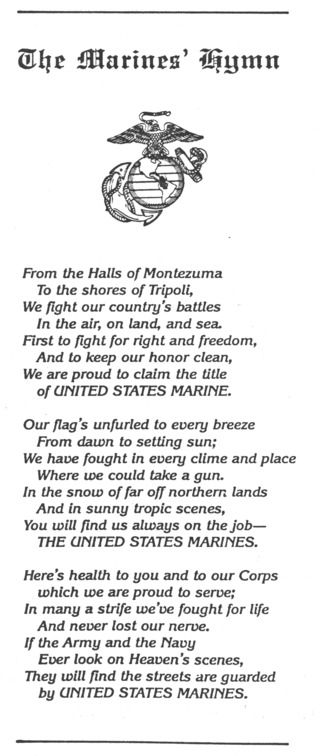
The "Marines' Hymn" is the official hymn of the United States Marine Corps, introduced by the first director of the USMC Band, Francesco Maria Scala. Its music originates from an 1867 work by Jacques Offenbach with the lyrics added by an anonymous author at an unknown time in the following years. Authorized by the Commandant of the Marine Corps in 1929, it is the oldest official song in the United States Armed Forces. The "Marines' Hymn" is typically sung at the position of attention as a gesture of respect, akin to a national anthem. However, the third verse is also used as a toast during formal events, such as the birthday ball and other ceremonies.

The Rotterdam Marine Band of the Royal Netherlands Navy, also referred to as the Band of the Korps Mariniers or simply the Dutch Marine Band is the Royal Netherlands Navy's official musical unit. Like Britain's Royal Marines Band Service it is the representative band of the entire navy despite being a reporting unit of the Korps Mariners, as sub-branch in the Dutch Armed Forces. Based in the port city of Rotterdam, the band was founded on 1 August 1945 as a continuation of the pre-war Regimental Band of the Royal Netherlands Navy.

The March of the Preobrazhensky Life-Guard Regiment is one of the most famous Russian military marches. The Preobrazhensky Life-Guard Regiment was one of the oldest and most elite guard regiments of the Imperial Russian Army.

Kenneth R. Force, Captain, USMS was band director of the United States Merchant Marine Academy Regimental Band from 1971 to 2016. The New York Times described him as "something of a Toscanini of military marching bands" and a "human encyclopedia of military ceremonial and musical data."
References
- ↑ Cleaveland, Nancy (2009). "A Life on the Ocean Wave". Pioneer Girl, Fact and Fiction of Laura Ingalls Wilder, A to Z. Archived from the original on 5 March 2012. Retrieved 31 May 2015.
A Life on the Ocean Wave was published in 1847, having been conceived while Epes Sargent was walking on the Battery in New York. He wished it could be put to music, but was told by a friend that it wasn't suitable. When Sargent showed the words to Henry Russell, he dashed to the piano and almost immediately put the words to music, and the song became popular in both England and America.
- ↑ Clark, Arthur H. (1910). The Clipper Ship Era, An Epitome of Famous American and British Clipper Ships, Their Owners, Builders, Commanders, and Crews, 1843-1869. Camden, ME: G.P. Putnam's Sons. pp. 166–169.
- ↑ "Who's On The Lord's Side?" (Hymn 260), Hymns of the Church of Jesus Christ of Latter-day Saints, 1985.
- ↑ Traub, Alex (20 October 2023). "Kenneth Force, the 'Toscanini of Military Marching Bands,' Dies at 83". The New York Times. ISSN 0362-4331 . Retrieved 12 April 2024.
- ↑ Langer, Emily (24 October 2023). "Kenneth Force, standard-bearer of military music, dies at 83". The Washington Post. Retrieved 13 April 2024.
- ↑ Mayson, Richard. "The Music of the Revolution". British Historical Society of Portugal. Retrieved 25 April 2024.